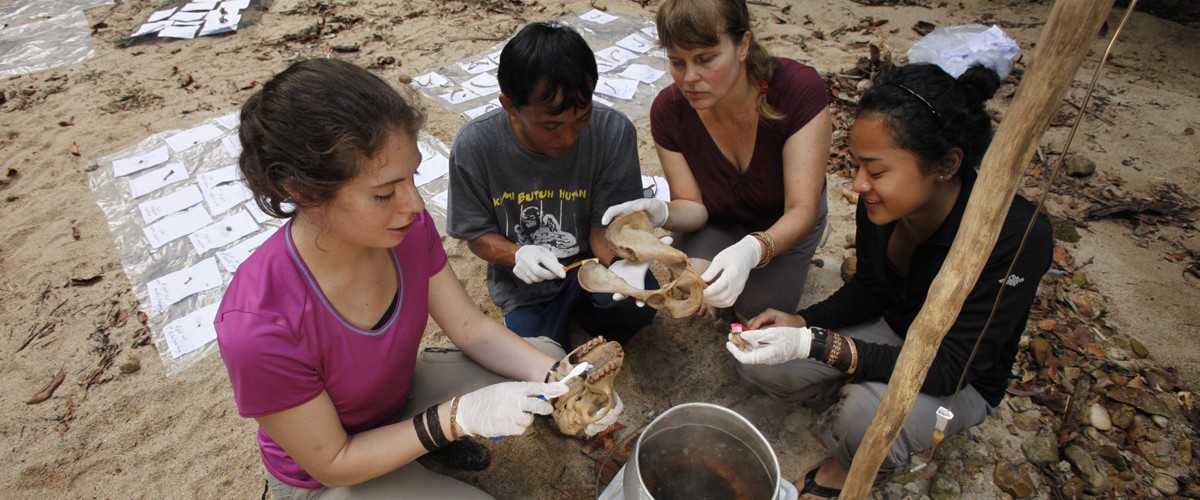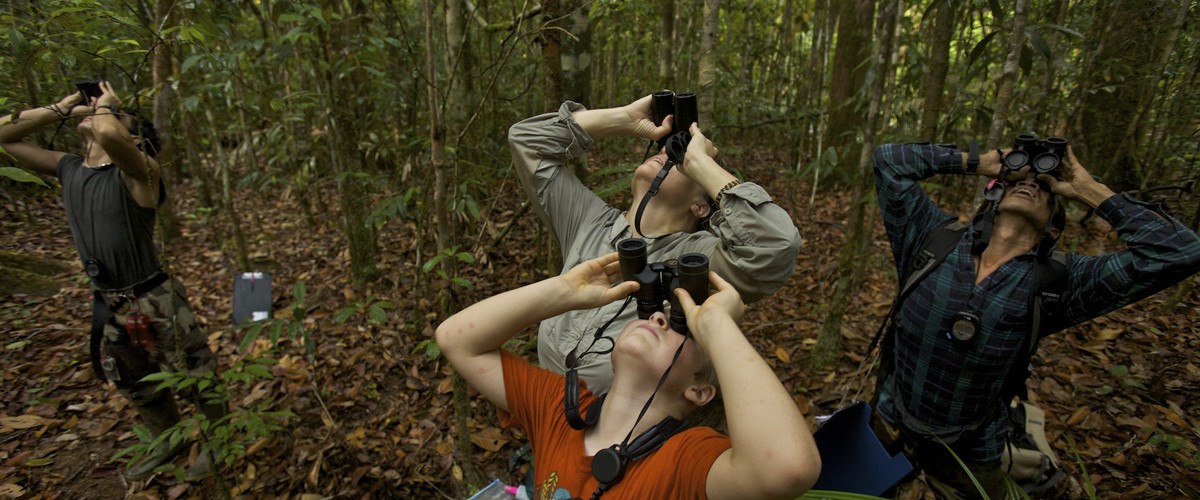By Amy Scott, PhD Candidate at University of Boston
Our lab investigates how reproductive strategies impact the sociality of orangutans by utilizing long-term behavioral data from the orangutans in Gunung Palung National Park. Because primates tend to be highly social mammals, they are ideal for studying how ecological and social factors impact the size and structure of groups. Reproductive strategies, such as searching for mates or avoiding potential infanticidal males, can impact grouping patterns. Infanticide is the purposeful killing of an infant of the same species. It is a common reproductive strategy by male primates in which a male kills another male’s infant, resulting in that mother being able to conceive again sooner than she would have if her offspring had lived. This behavior can lead to more offspring by the infanticidal male because he will be able to mate with that mother sooner than he would have if the infant lived. By our standards, this may seem harsh, but an important principle in natural selection is that genetically inherited behavioral traits that lead to more offspring will be passed on to the next generation at a higher frequency and therefore spread through a population.

Female primates employ a variety of strategies to reduce infanticide risk. For example, chimpanzees exhibit a ‘maternity leave’ behavior in which mothers with new offspring spend more time alone than usual. This behavior can serve to protect new offspring. Because orangutans are semi-solitary, only spending about 10% of their time in a social encounter with another orangutan, a female with young offspring could employ a similar male-avoidance behavior in order to protect her offspring. Orangutans are hypothesized to be vulnerable to infanticide for a variety of reasons and we suspect that there was an infanticide event at Cabang Panti in 2015 (See Code Red vol. 40 for more details). So, we decided to analyze long-term social data in order to investigate whether mothers with young offspring avoid males. We examined all of the social interactions between male and female orangutans in the Cabang Panti database from 1994-2003 and 2008-2016. (The break in data collection is because the field site was closed due to regional safety concerns, including the threat of illegal logging.) We found that mothers with infants younger than 6 years old interacted with males less frequently than did mothers with offspring over 6 years old and females without offspring. Likewise, when an interaction between a female and a male did occur, mother with offspring under 6 years old spent less time with males than did mothers with offspring over 6 and females without offspring. Finally, the average distance between mother and offspring was closer when they were interacting with a male than when the mother and offspring were alone or interacting with a non-related female. These three pieces of evidence indicate that females alter their social interactions in order to protect offspring from males. These findings add to our understanding of orangutan sociality, and more broadly, contribute to a deeper understanding of how social and reproductive factors influence primate sociality.

In scientific research, the strength of your finding is hugely dependent on the amount of data you analyze. Because orangutan interactions are infrequent, it takes a long time to amass enough data on social interactions to systematically study them. For this study we analyzed 20 years of data collection – and collecting this data was no small feat!
This research is only possible because teams of field assistants, volunteers, students, post-docs and managers have been collecting and organizing this data day in and day out for 20 years. Many others are involved in the logistics that have enabled the project to run in this remote rainforest location. And even more individuals and organizations have donated funds to support the conservation and research of GPOCP. This exciting finding that female orangutans are indeed avoiding males when they have younger offspring is only possible because of the long-term nature of the project’s database. We can only imagine what more we will learn about this endangered ape in the next 10 or 20 years as continued data collection enables us to answer more questions about their cryptic lives.









